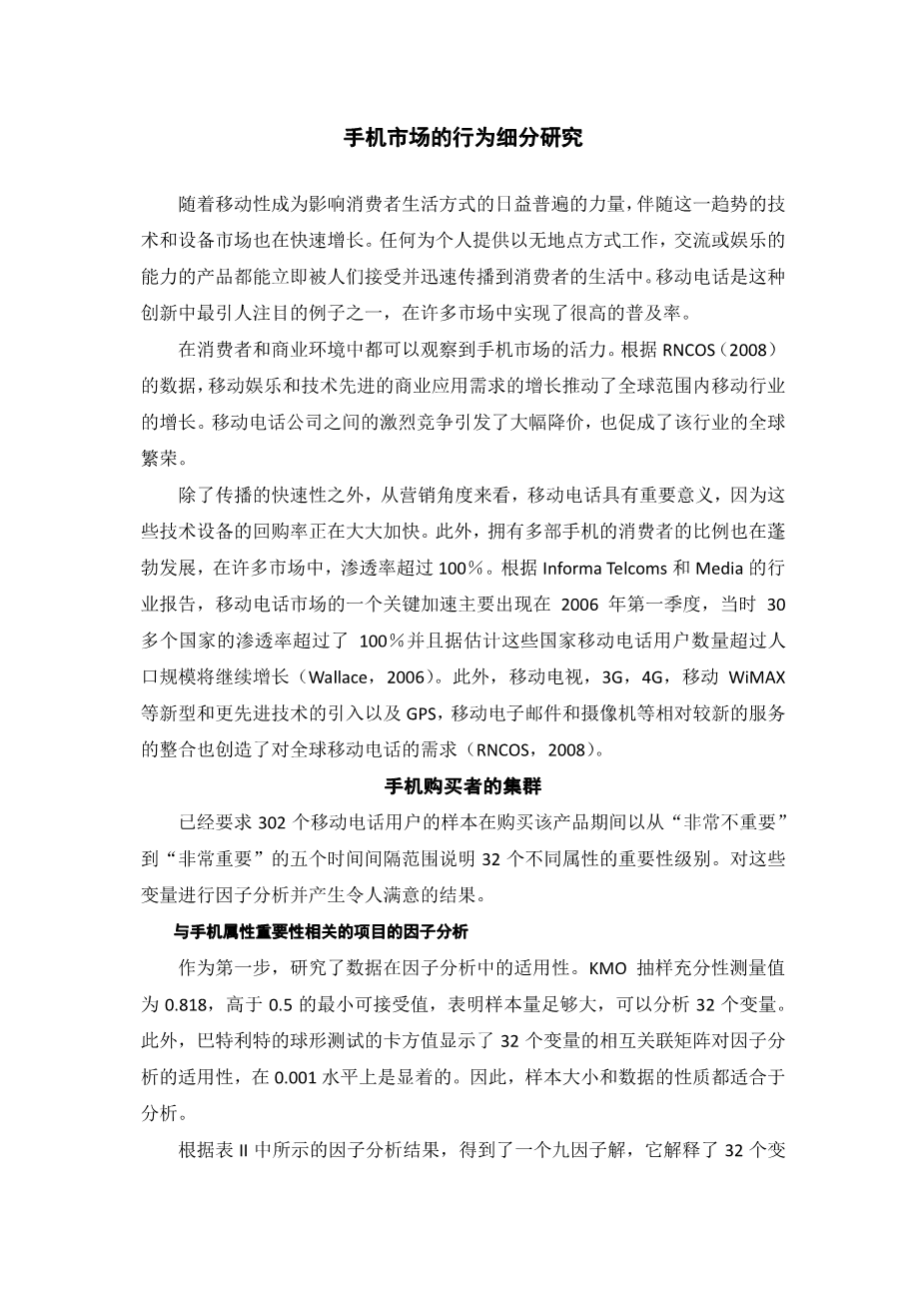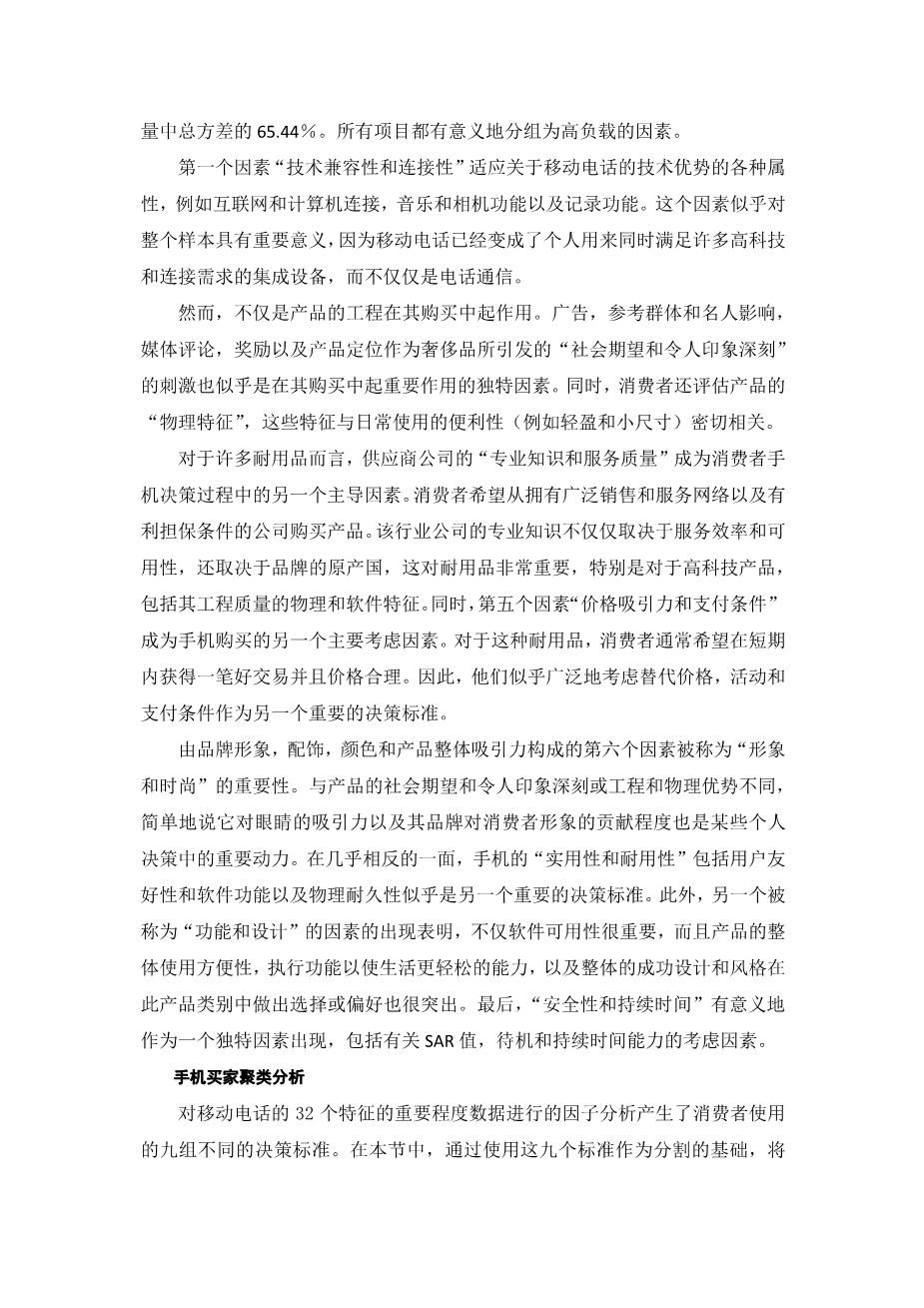Discovering behavioral segments in the mobile phone market
Introduction
As mobility becomes an increasingly prevalent force shaping the lifestyles of consumers, the market for the technologies and devices accompanying this trend also improves at a fast pace. Any product that offers individuals the ability to work, communicate or entertain themselves in a location-free manner captures immediate acceptance and diffuses rapidly into consumers’ lives. Mobile phones are one of the most conspicuous examples of such innovations achieving a large penetration rate in many markets. The dynamism of the mobile phone market can be observed both in consumer and business contexts. According to RNCOS (2008), increased demand for mobile entertainment and technically advanced applications for business have infused growth in the mobile industry worldwide.
Intense competition among mobile phone companies triggering significant price reductions also contributed to the worldwide boom in the industry. In addition to the rapidness of its diffusion, mobile phones carry a significant importance from a marketing perspective since the repurchase rates for these technological devices are greatly accelerating. Also, the rate of consumers owning more than one mobile phone is also flourishing, creating penetration rates that exceed 100 percent in many markets. According to the industry report of Informa Telcoms and Media, a crucial acceleration in the mobile phone market was primarily seen in the first quarter of 2006 when the penetration rate had exceeded 100 percent in more than 30 countries and it has been estimated that the countries where the number of mobile phone subscriptions exceeds the size of the population will continue to grow (Wallace, 2006). Furthermore, introduction of new and more advanced technologies like Mobile TV, 3G, 4G, Mobile WiMAX and the integration of relatively new services like GPS, mobile email, and video camera too has created demand for mobile phones around the world (RNCOS, 2008).
clustering of mobile phone buyers
A sample of 302 mobile phone users have been asked to state the importance levels of 32 different attributes during the purchase of this product over a five-point interval scale ranging from “very unimportant” to “very important”. Factor analysis was performed on these variables and produced satisfactory findings.
Factor analysis of the items related to the importance of mobile phone attributes
As an initial step, the suitability of the data for factor analysis is investigated. The KMO measure of sampling adequacy is found to be 0.818, higher than the minimum acceptable value of 0.5, indicating that the sample size is large enough to factor analyze 32 variables. Besides, the Chi-square value of Bartlett’s Test of Sphericity, which shows the suitability of the intercorrelation matrix of the 32 variables for factor analysis, is significant at the 0.001 level. Thus, the sample size and the nature of the data are both fit for the analysis.
According to the factor analysis results demonstrated in Table II, a nine-factor solution which explains 65.44 percent of the total variance in 32 variables is obtained. All items are grouped meaningfully into the factors with high loadings.
The first factor, “technological compatibility and connectivity” accommodates various attributes about the technological superiorities of a mobile phone such as internet and computer connection, music and camera functions, and recording capabilities. This factor seems to carry a significant importance level for the overall sample since mobile phones have turned into integrated devices that individuals use to meet many high-technology and connectivity needs at the same time rather than only telephone communication.
However, it is not only the engineering of the product that plays a role in its purchase. The stimulation of “social desirability and impressiveness” induced by advertising, reference group and celebrity influence, media reviews, awards and the positioning of the product as a luxurious possession also appears as a unique factor that plays a prominent role in its purchase. Meanwhile, consumers also evaluate “physical features” of the product that relate strongly to the convenience of everyday usage such as lightness and small size.
As for many durable goods, the “expertise and service quality” of the vendor company arises as another dominant factor in the consumer decision-making process for mobile phones. Consumers want to make their purchases from a company with an extensive sales and service network and favorable guarantee conditions. The expertise of the company in the sector is not evaluated only by service effectiveness and availability but also by the brand’s country of origin which is very important for durable goods, especially for hightechnology products including both physical and software features in their engineering quality. Meanwhile, the fifth factor, “price attractiveness and payment conditions” arises as another major consideration area in mobile phone purchasing. For such durable goods, consumers generally want to get a good deal in the short term and a good value for price in the long-term. Thus, they seem to consider alternative prices, campaigns and payment conditions extensively as another important decision-making criterion.
The sixth factor which is constituted from brand image, accessories, color and overall attractiveness of the product has been named as the importance given to “image and trendiness”. Different from the social desirability and impressiveness or engineering and physical superiorities of the product, simply how appealing it is to the eye and how much its brand contributes to the image of the consumer also act as important dynamics in the decisions of some individuals. On the nearly opposite side, “practicality and durab
剩余内容已隐藏,支付完成后下载完整资料


英语译文共 5 页,剩余内容已隐藏,支付完成后下载完整资料
资料编号:[447804],资料为PDF文档或Word文档,PDF文档可免费转换为Word


